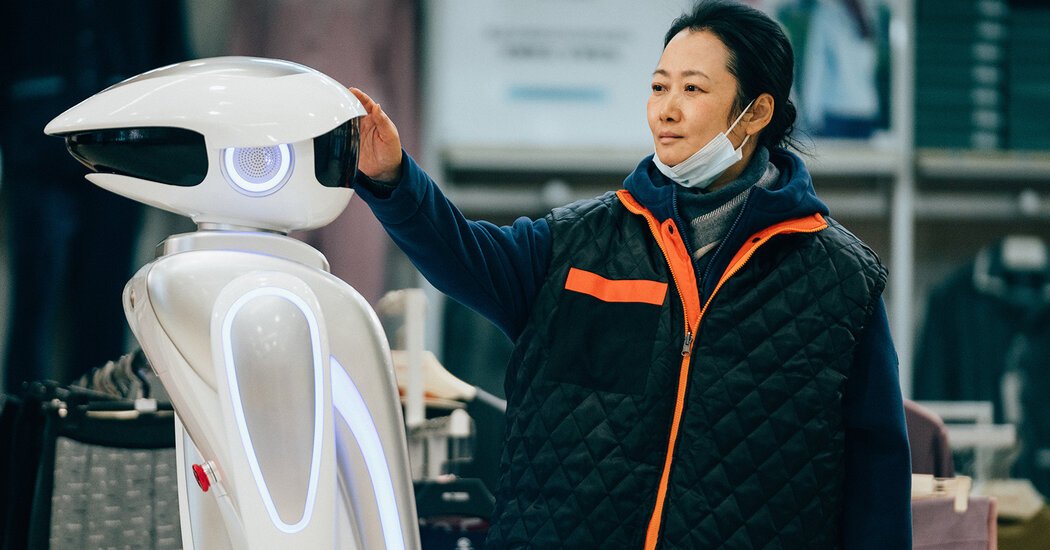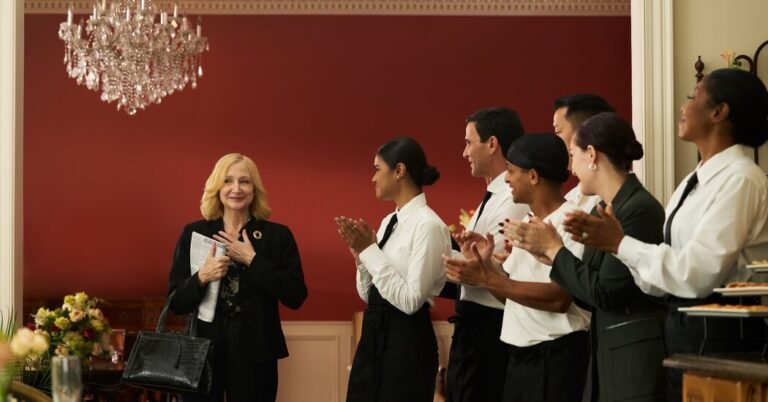The story, such as it is, opens in the northern city of Datong and emerges gradually without the usual filmmaking preamble and prompts. If Jia has ever read a screenwriting manual, he probably immediately tossed it, laughing. His work fits more readily into art-cinema traditions than those of Hollywood, but is nevertheless insistently nonprogrammatic. “Caught by the Tides” takes place over some 20 years that, contrary to convention, aren’t shaped into neatly defined three (four or five) acts. Instead, time in the movie flows, just as in life. One minute, Qiaoqiao is young and has a bob and bangs; in the next she’s clearly older, and appears more inwardly directed, her now-long hair pulled back in a ponytail.
Qiao and Bin’s emotionally fraught romance winds throughout “Caught by the Tides,” but the movie’s heart and its obvious sympathies are more with her than with him. About a half-hour into the movie, she appears one night watching a joyful, raucous crowd flooding the street. It’s 2001, and China has just been named as the host of the 2008 summer Olympics. (“China won!”) The country is on the move, and Qiaoqiao soon will be too. Shortly thereafter, Bin splits to pursue a business venture elsewhere, and she follows. She’ll keep on following him for the remainder of the movie amid national milestones, more crowds, dramatic turns, many songs and a multitude of young and old, unlined and weathered faces.
It’s never clear what Qiaoqiao sees in Bin other than his careless, near-sullen inattention toward her, which, of course, can be exceedingly potent romantic catnip. Whatever the reason, she is drawn to him despite his schemes and roving eye. The first time they appear together in a scene is at a club where she finds him cozily sitting side by side with a woman who’s wearing the kind of chalk-white makeup, elaborate headdress and costume worn in traditional Chinese opera. The differences between that woman and the casually up-to-date Qiaoqiao — emblems of the old and new China — couldn’t be more striking. Just as notable is how Bin treats Qiaoqiao, whom he brusquely tells to sit, gesturing toward a seat opposite him.
Viewers who’ve seen Jia’s drama “Unknown Pleasures” (2002) might wonder if they’re experiencing déjà vu while watching this scene. That’s because in the first two-thirds of “Caught,” Jia has drawn from material that he shot years earlier, including alternate takes from some of his older movies, notably “Pleasures” and “Ash Is Purest White” (2019), in which Zhao’s characters have the same name. This creates a startling continuity because in “Caught,” you’re watching not just characters age in a few hours but also the actors playing them, changes that mirror the accelerated pace of China’s embrace of capitalism. The country joined the World Trade Organization in 2001 (the year that “Caught” opens), and is now the world’s second biggest economy.







